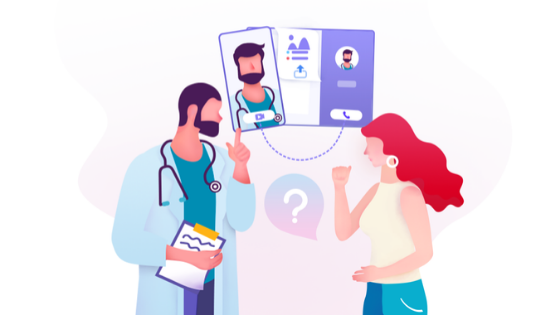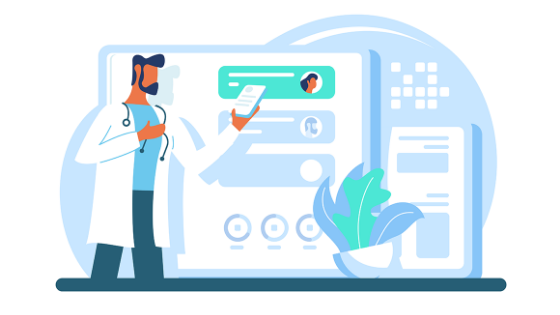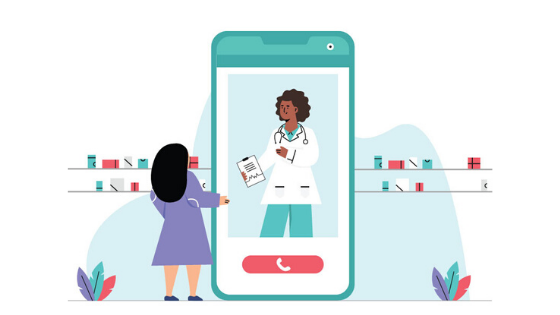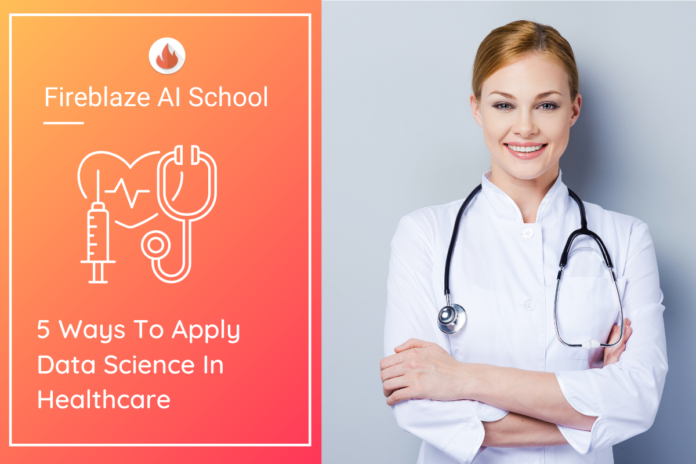Table of Contents
How We Can Apply Data Science In Healthcare
The advent of technology has always found a warm welcome in Healthcare, data science in healthcare is one of them. This sector has shown great reception to technological advancements to improve the efficiency of its process. It wouldn’t be wrong to say that Healthcare has embraced technology for good. But this reception is rather essential than welcoming because of the nature of this industry – something that always seeks precision. And why should it not – after all, at stake are your, mine and everyone else’s lives.
So whom to call? Guessing from the recent patterns, you must have easily “predicted” that the answer is Data Science. And yes of course it is!
It is indeed living up to the expectations created by its buzz – even capitalizing it and how!
Data Science is acted as a perfect catalyst for a discipline that is bound to make human lives better day by day. With the upsurge of jobs in Data Science and the unending data from healthcare (or any industry for that matter), it is quite imperative for us to strike the red hot iron.
The best part about such applications of data science in healthcare is that once you get an essence of it, you will explore newer possibilities by yourself. And like all good things, the chain reaction continues. But, but unlike all good things, it does not seem to come to an end.
So let’s begin with the top picks in our medical prescription for Data Science:
Widget not in any sidebars
Medical Image Analysis

The medical image analysis technique involves creating visual representations of the interior of a body for clinical analysis. which can be extended to specific organs or tissues for identifying abnormalities or other defects.
In the simplest sense, this technique solves medical issues by analyzing problems from images. The solutions may then range from diagnosis to follow-ups on earlier treatments.
It also encompasses the ability to compare various stages of therapies or diagnosed patients responding to various drugs. Based on the image of an intermediate stage, medical image analysis can also predict further development and can thereby suggest appropriate improvements.
Drug Discovery

Launching a drug in the market is not an easy process. In 21st-century drug discovery might still take as long as 12 years of research and truckloads of money before being launched.
Take Wikipedia’s testimony here: “drug discovery is a capital-intensive process; expensive, difficult and inefficient with a low rate of new therapeutic discovery”. Our mate Data Science tried to make lives somewhat easier – it helped study and analyze the response of our body to various medicines under varying conditions.
All it could do is to speed up the entire process by a bit and make drugs available faster.
Widget not in any sidebars
Diagnostic Precision

How often have you heard of patients being incorrectly diagnosed for an ailment?
Yes, you read it right – the associated treatment and medicines in such cases have yielded fatal results including DEATH. But do not expect the same bound on human errors.
To compensate aptly for it comes our old faithful Data Science.
Data Science matches patterns from previous records and accordingly predicts the possibility of the occurrence of a disease. This data is processed and correlations are found based on which the association between symptoms is derived. It also considers the possibility of diseases passing through the inheritance of characters.
It not only reduces the risk of incorrect classification but also takes into account the types of symptoms that might go into shaping a disease.
So now there’s something you can always trust – hence the precision.
Health Data Monitoring

Health data monitoring to the data collected from patients through Wearable Devices and other health monitoring systems. These are mostly IoT based devices that track heartbeat, blood pressure, calorie intake, and similar medical parameters.
Based on the data collected, it becomes easy for a doctor to analyze the health activity of a patient. On the basis of results of the predictions made from this data can also be counted upon as it is referenced in real-time.
As figured out from most applications, the core of the process lies in identifying patterns and deducing probable outcomes to counter the problems.
24/7 Virtual Assistance

The availability of a medical practitioner is an issue of concern for most patients. An emergency may arise in any situation that too without prior invitation.
To handle such critical conditions, virtual assistants have been made available to effectively guide a patient in the absence of a doctor. These assistants are present 24/7 and enquire a patient thoroughly regarding the specified ailment.
Based on the information collected, the assistants suggest solutions or remedies to the patients. This removes a dependency of the patient always relying on the availability of doctor.
I may not remind you of how crucial time is for healthcare and Data Science precisely touches the point. You have to take that for real!
So, so so the “Midas Touch” of Data Science is bringing in gold and making lives golden. The possibilities are endless and technology knows only one direction to move – advancing forward. The pick here is that Data Science is helping transform radical ideas into implementable solutions and has fueled innovation throughout. The insights and values it derives from all dimensions keep building up the commitment for a brighter, better and of course data-driven future.




